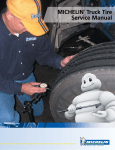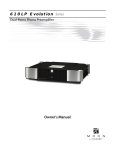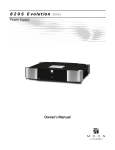Download Tire Repairs
Transcript
Tire Repairs S E C T I O N Tire Repairs High loads, speeds and tire operating pressures place critical importance on tire maintenance practices. Tire repair is an integral part of maintaining radial tires to achieve the maximum in performance and value. Because of this, personnel should be adequately trained in repair procedures and techniques, and only the highest quality repair materials should be used. 80 T E N S T E C T I O N Tire repairs normally made by fleet operators and tire service centers are limited to simple punctures such as nail holes. Anything more extensive, such as spot, reinforcement, or section repairs should be referred to an authorized full service Goodyear retreading and repair facility. E N Significant cuts and cracks in the sidewall area should be spot repaired as soon as possible to prevent the need for a major section repair. Frequent tire inspection in service is recommended. This section gives information concerning tire damage, extent, and location, to help determine whether or not section repairs are feasible. Figure 10.1 Cutaway View of Unisteel Tire 81 Tire Repairs The cutaway view of the Unisteel tire in Figure 10.1 shows the construction typical of Goodyear radial truck tires. The single radial ply of steel cord as well as the four steel cord belt plies are evident. S Tire Repairs E C T I O N T E N NAIL HOLE REPAIR PROCEDURES Radial tire nail hole repairs up to 3/8-inch diameter (9.5 mm) may be made in the tread face as long as the nail hole is at least one-inch inside the shoulder. All injuries outside this point should be treated as a section repair. RADIAL ONLY Radial Only Repair Area Figure 10.2 Any number of repairs in the approved crown area only tread minus outer 1” area (use outer grooves as a guide). Refer larger injuries to a full service repair shop. Do not overlap patches. Figure 10.4 Beads in relaxed position. Using a carbide cutter, drill the injury from the inside to clean and prepare the injury for the plug. Figure 10.6 Brush chemical cure cement on nozzle and insert into the hole while turning clockwise. Figure 10.3 Dismount tire. Remove puncturing object. Using a probing awl, determine the size and extent of injury, and angle of penetration. Thoroughly inspect the inside of the tire for additional damage. Clean area to be repaired inside of tire with scraper and pre-buff cleaner. Figure 10.5 Apply a coating of chemical cure cement to the leading 1/3 of the cured plug. Remove the end of the plug insertion tool and insert the plug into the nose piece. Do not contaminate the plug or cross thread the nose piece. Figure 10.7 Apply air pressure (80 psi) to top of gun. This presses the plug through the nozzle into and through the injury. Remove the gun while turning in a clockwise direction. 82 If a pull-through plug is used, insert the plug into the wire puller, apply chemical vulcanizing cement to the leading 1/3 of the cured plug and pull through the injury from the inside of the tire. S T E C T I O N Figure 10.8 Cut excess plug 1/16'' above the liner surface on the inside. Do not stretch plug. E N Tire Repairs Figure 10.10 If using a chemical cure repair patch, cement the back of the patch and the buffed liner with chemical vulcanizing cement. If using a “Versacure” type repair patch, cement the buffed liner only. Thoroughly cover the cemented areas with a light, even coat. Allow proper drying time before applying the repair patch. RADIAL ONLY Radial Only Figure 10.9 If necessary, repeat the liner cleaning procedure with pre-buff cleaner. Using a low-speed grinder, buff the liner to an RMA1 texture finish. Then vacuum to remove dust and debris. Figure 10.11 Place beads in a relaxed position. Center the patch over the plug and stitch the patch from the center out. Directional arrows on the patch must be properly aligned, after stitching is complete. Apply a coat of butyl liner repair sealer to the patch edges and the over buffed liner. Trim the excess plug no more than 1/8” above the outside tread surface. 83 *When using chemical cure MCX series patches, use chemical vulcanizing solution on the buffed liner and back of repair patch for heat and non-heat applications. S Tire Repairs E C T I O N T E N RADIAL SECTION REPAIR LIMITS IN SIDEWALL AND SHOULDER AREA Most sidewall injuries will be the split-type, caused by snags and punctures. Maximum injury sizes for sidewall and shoulder repairs are shown below. The number of these section repairs should be limited to 2 per tire for line haul service and 3 for city service with a maximum of 2 repairs per any 90 degree quadrant of the tire as long as repair patches do not overlap and the same ply wires are not affected by more than one injury. Spot repairs may be made without limit providing that the body plies are not exposed or damaged. Existing repairs must be reworked if loose or questionable. NOTE Wire must be sound and free of rust. Maximum shoulder and sidewall injury for typical line haul medium truck tire is 1'' wide (circumferentially) x 4'' long (radially). See authorized Goodyear full service repair facility for other appropriate limits. Figure 10.16 Repair Patch Should Be Centered Over Injury Max Repair Figure 10.14 Y Body Ply X Maximum Shoulder and Sidewall Repair Size Figure 10.12 Casing Size (b) 10.00R20/22 11.00R20/22 11R22.5/24.5 12R22.5 285/75R24.5 295/75R22.5 15R22.5 16.5R22.5 18R22.5 Maximum Injury Size (X) Width (Y) Length Cable 1-1/2 1/8 3-3/4 3/8 5 1/2 5 3/4 5 1 4 Center Patch Over Injury Figure 10.15 Figure 10.13 84 S T E C T I O N E N APPLICATION OF CENTER-OVER-INJURY SECTION REPAIRS RADIAL PLY TIRES Non-Repairable Areas Tire Size Dimension A All “LT” Tires 8.25R, 9.00R, 10.00R 9R, 10R, 11R 16.5, 18R22.5 285, 295, 305, 315/75R, 80R, 85R 11.00R, 12.00R 12R, 13R/FR20 12/80R, 13/80R, 14/80R 2-1/2'' 3'' 3'' 3'' 3'' 3-1/2'' 3-1/2'' 3-1/2'' Figure 10.20 Dimension A Figure 10.17 Sidewall or Shoulder Repair Center Patch Over Injury Figure 10.21 CROWN REPAIR LIMITS Figure 10.18 Tread Repair Center Patch Over Injury Injuries up to 1-1/2'' diameter may be repaired in line haul and city service radials depending on tire size. Radial mileage tires used in city bus service only may be repaired up to 1'' diameter. See authorized Goodyear full service repair facility for other appropriate limits. Figure 10.19 85 Tire Repairs






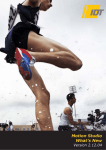

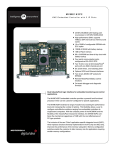
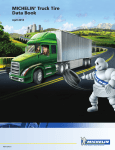

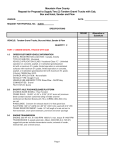

![Trailer Roll Stability (TRS) Installation Manual [L30040]](http://vs1.manualzilla.com/store/data/006020641_1-040a22153212ab13bbec744ca183c148-150x150.png)
